Wondering about cabinet hardware placement? From knobs to pulls, traditional to contemporary, this guide tells you exactly where to put your hardware for a stylish look that’s perfectly functional!
Once I selected all of the materials for my kitchen renovation, you’d think the hard part would be over. But no! The day finally came when the contractor asked me, “Where do you want the hardware installed?“
My husband was subjected to countless, repetitive questions “Do you like this? Or this? This? Or this?” He was a saint for putting up with me. But cabinet hardware placement is a big decision!
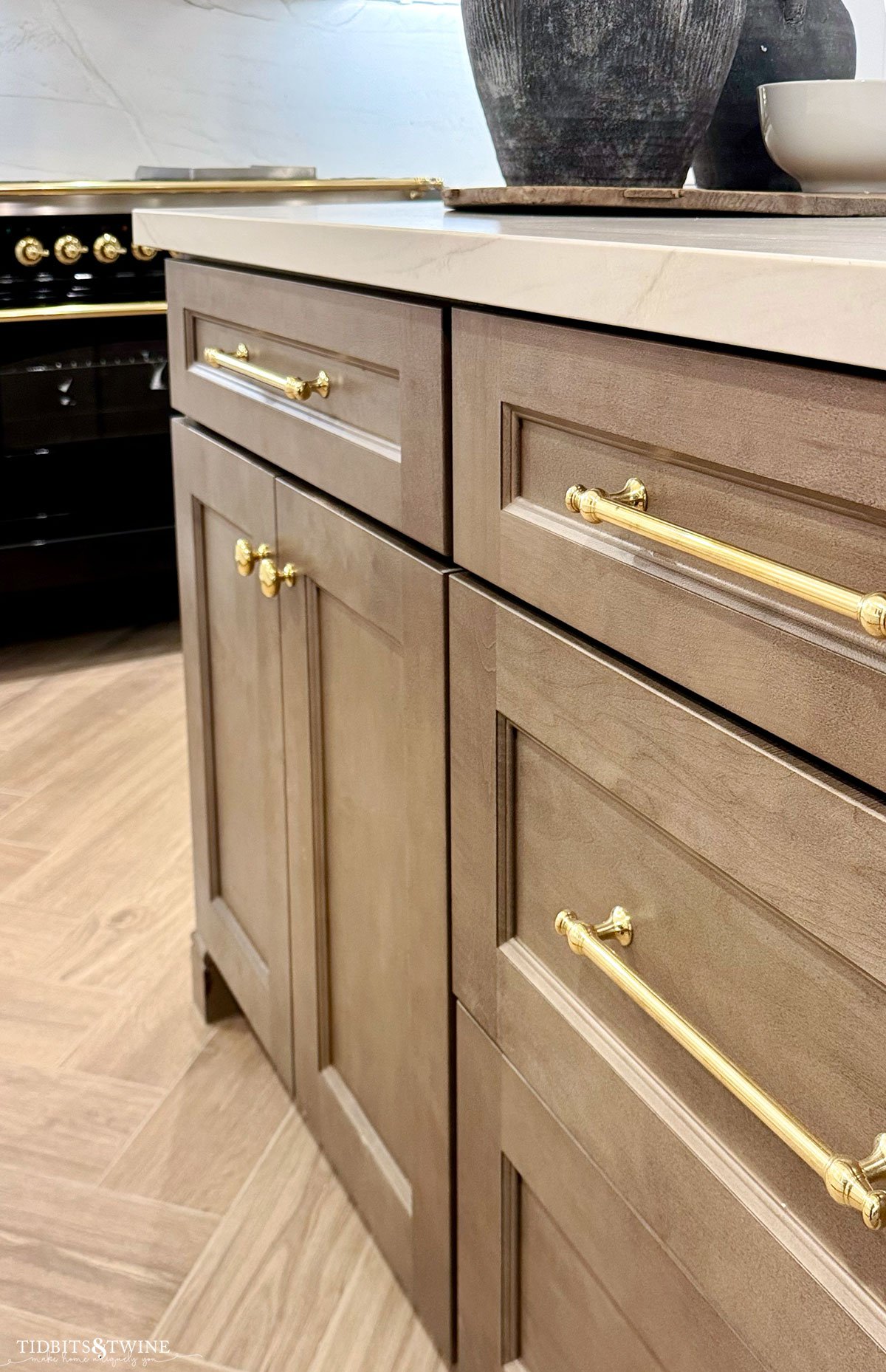
Not only does the placement affect aesthetics, but also function. Sure you can just put it anywhere, but it might feel a bit “off” if you don’t get it right.
I’m using the term “right” a bit loosely if I’m honest, though. There are two basic styles for hardware placement and both are perfectly fine! Which you choose really depends on your personal preference and also the style of cabinetry you have.
In this article, we’ll cover:
Where to Use Knobs and Pulls
In general, homeowners use knobs on doors and pulls on drawers. But that’s not actually a rule. Some people prefer a seamless look by using either all knobs or all pulls.
You can use knobs on both doors and drawers for a simple look. Wide drawers (over 24″) can accommodate two knobs. Simply divide your drawer front into thirds and place a knob in the 1st and 3rd sections.
Alternatively, you can use simple pulls on both doors and drawers for a sleek and modern look. You can use the guidelines below for knobs to determine where to place one end of your pull on a door front.
Appliance pulls, however, are really only for appliances. They tend to be longer than standard drawer pulls, but also have more projection for your hand.
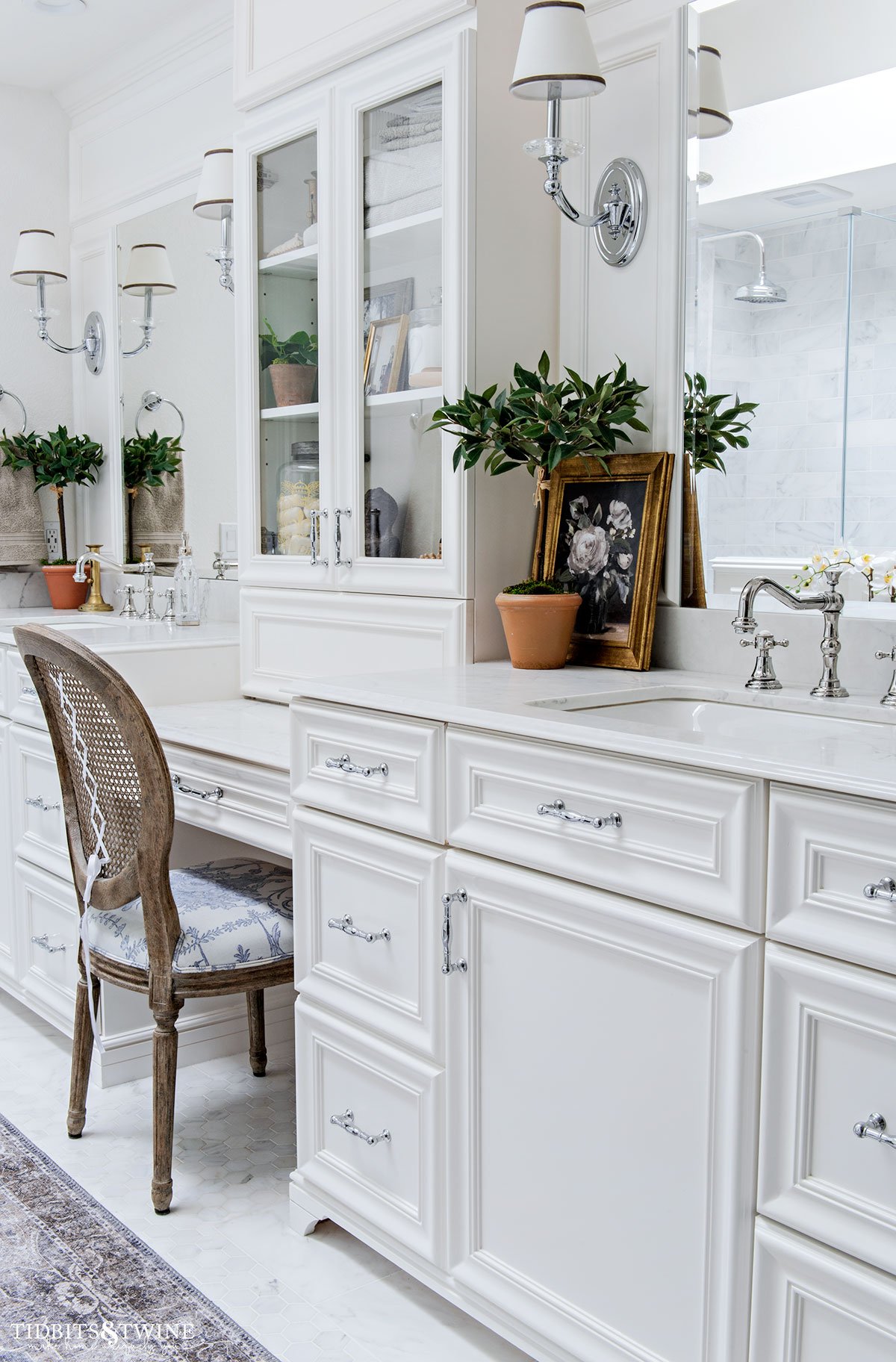
Types of Knobs and Pulls
Knobs
In the realm of cabinetry and furniture, a knob refers to a small, often rounded handle that is attached to the surface of a door or drawer. Beyond their practical function, knobs also serve as decorative elements, contributing to the overall design scheme of a room.
You can use a traditional round knob, but there are so many options these days that you might just drive yourself crazy with the possibilities. You could choose square, oval, novelty, crystal, wood, and so many other options.
And the beauty of knobs is that the screws are a standard size and each only requires one screw hole. That means that if you want to udpate your cabinet knobs, you can simply swap out your old ones for a new one with no fuss!
Pulls
There a few different styles of cabinet pulls, so let’s take a look at them here.

Bar Pulls
Bar pulls, also known as handle pulls or drawer pulls, feature a straight, elongated design resembling a bar or rod. They typically have a cylindrical or rectangular shape and are attached to cabinets with two screws.

Bin Pulls
Cup pulls, also referred to as cup pulls or half-moon pulls, feature a cup-shaped design with a single mounting point. They are often used on drawers and cabinets where a larger grip surface is desired.
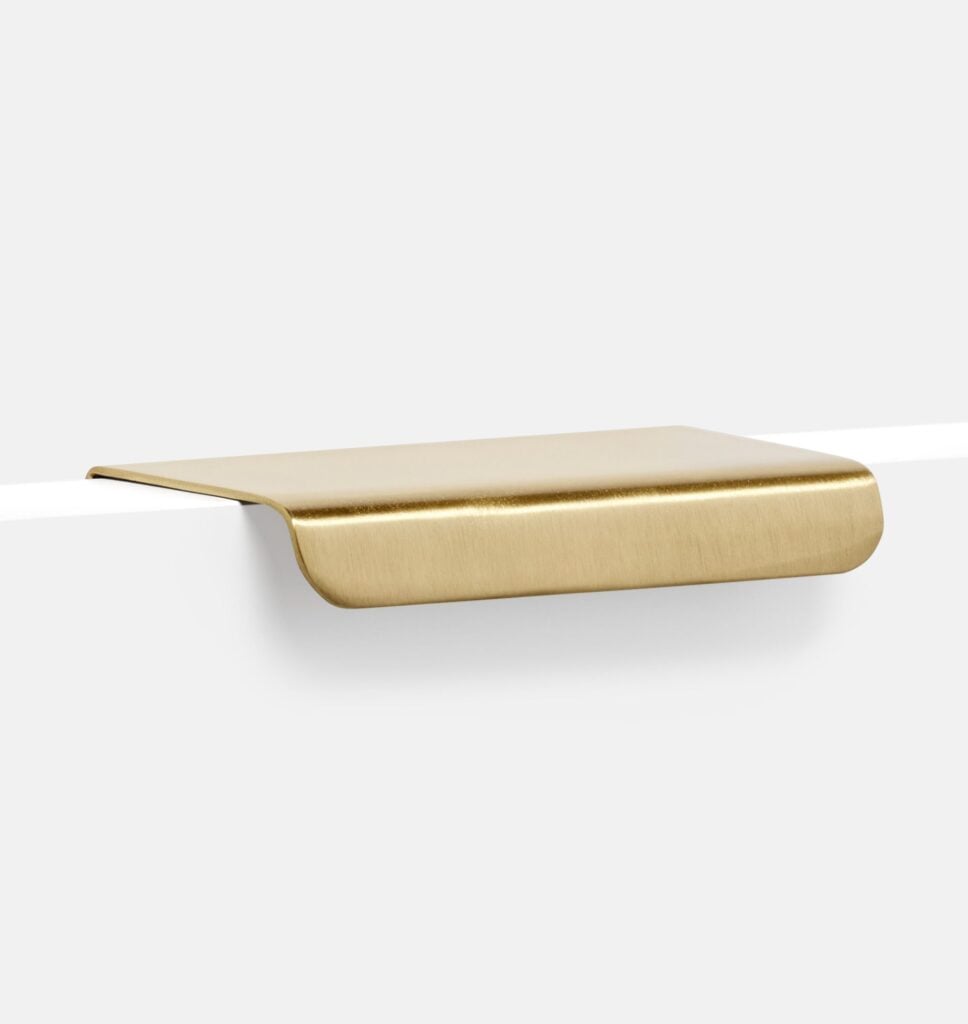
Finger Pulls
Finger pulls, also known as recessed pulls or edge pulls, are discreet handles that are recessed into the surface of the cabinet door or drawer front. They provide a minimalist, streamlined look and are ideal for modern and contemporary interiors.
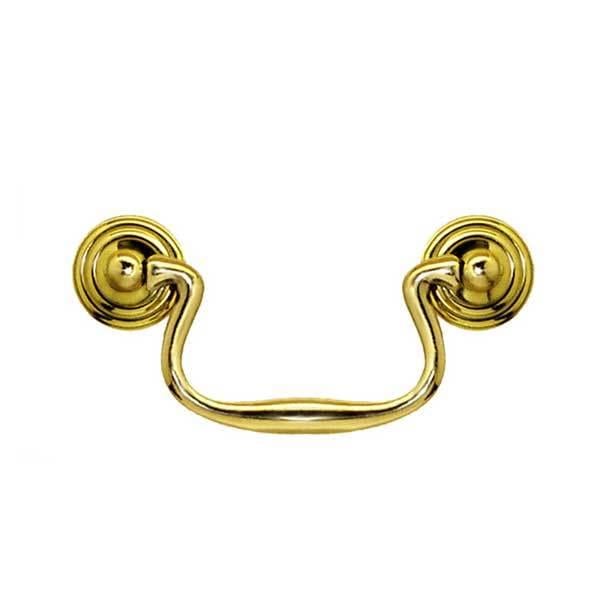
Bail Pulls
Bail pulls, also called drop pulls or swing handles, feature a hinged handle that hangs from a decorative backplate. They have a classic, vintage-inspired appearance and are often used on traditional and antique-style furniture.
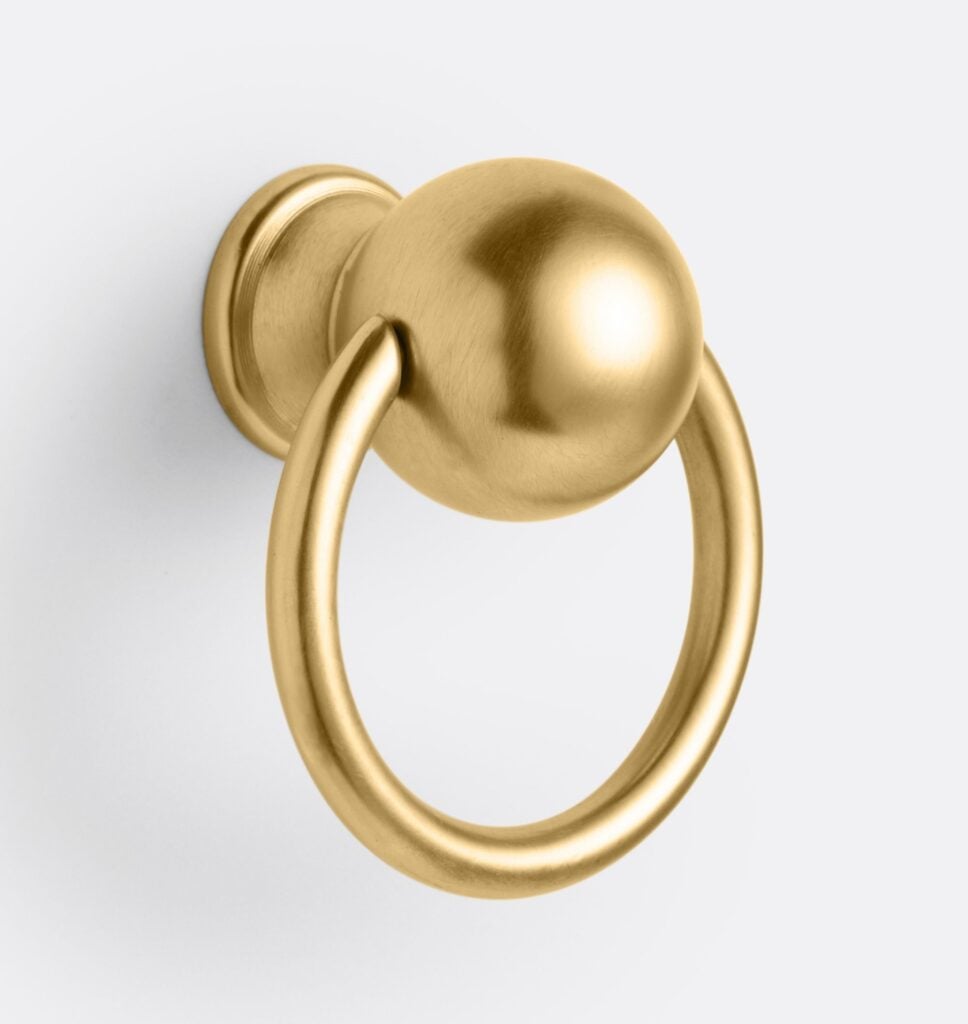
Ring Pulls
Ring pulls consist of a ring-shaped handle that is attached to a decorative backplate. They offer a timeless and elegant look, reminiscent of antique hardware found on vintage furniture pieces.
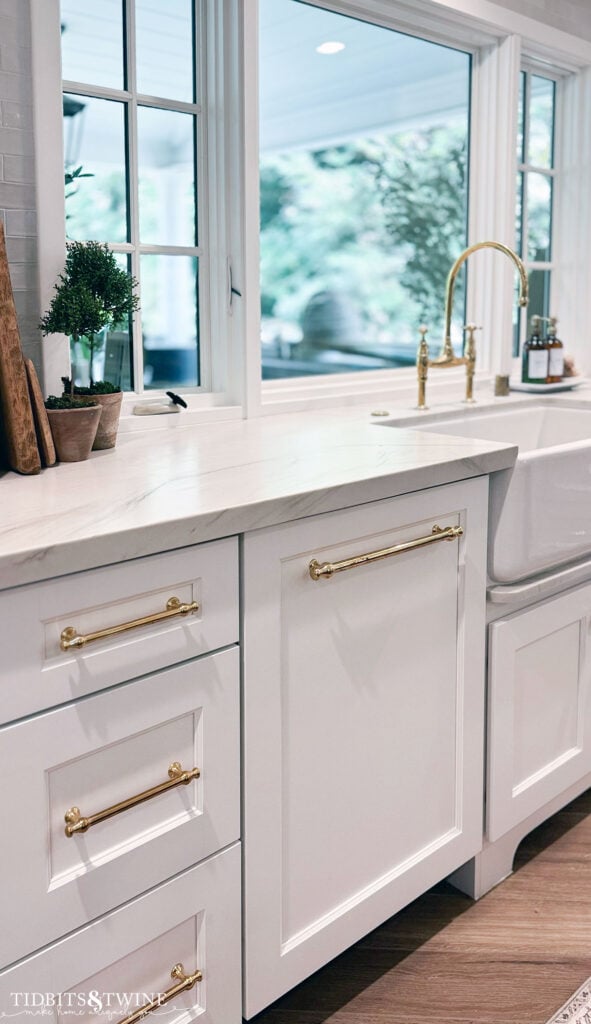
Appliance Pulls
An appliance pull is a type of cabinet hardware specifically designed for larger appliances, such as refrigerators and dishwashers. These are used when the appliances are purchased as panel-ready appliances, where the homeowner attaches a cabinet door to the front of the appliance to give it a seamless and hidden look. In these cases, a special appliance pull will need to be attached to the front and these pulls are larger and more robust to accommodate the size and weight of appliance doors.
The Role of Rails and Stiles
Okay, now for the boring part. I need to explain a little bit of cabinet door terminology so that you can better understand when I use these terms below.
Rails and stiles are essential components of cabinet construction and play a crucial role in hardware placement.
- Rails: Rails are the horizontal pieces of a cabinet frame that connect the stiles. They provide structural support and contribute to the overall stability of the cabinet.
- Stiles: Stiles are the vertical pieces of a cabinet frame that form the sides of the cabinet. They help define the cabinet’s dimensions and provide a framework for attaching doors and drawers.
So a door/drawer with two rails, two stiles and a center panel, is called a 5 piece door/drawer. If you have a complete flat door/drawer with no raised or recessed areas, that’s called a slab door/drawer (sometimes people call it a solid door).
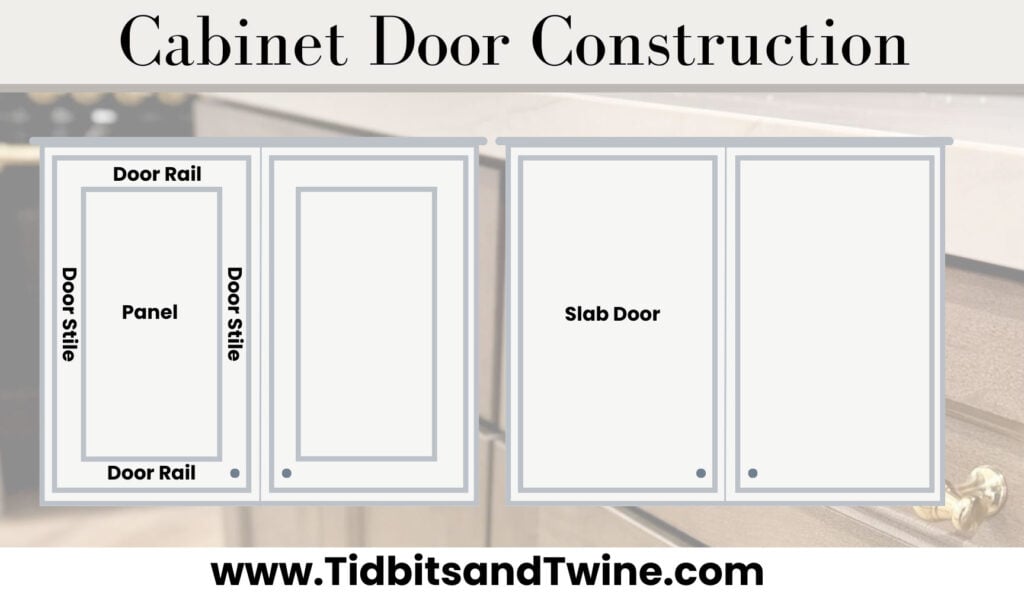
Cabinet Door Knob Placement
Okay, now for the actual placement of knobs!
Knobs – Traditional Placement
Traditional placement of knobs means that you center the knob on both the stile and the rail on the lower portion of the door (for upper cabinets) and the upper corner (for lower cabinets).
Knobs – Contemporary Placement
A more contemporary placement is to still center your knob on the stile, but place it centered at the top of the bottom rail (for upper cabinets) or top rail (for lower cabinets). There is a slight variation on this where instead of centering it on the rail edge, you can align your knob with the rail edge.
I’m a visual person so if you are too, here’s a diagram of the placement options.
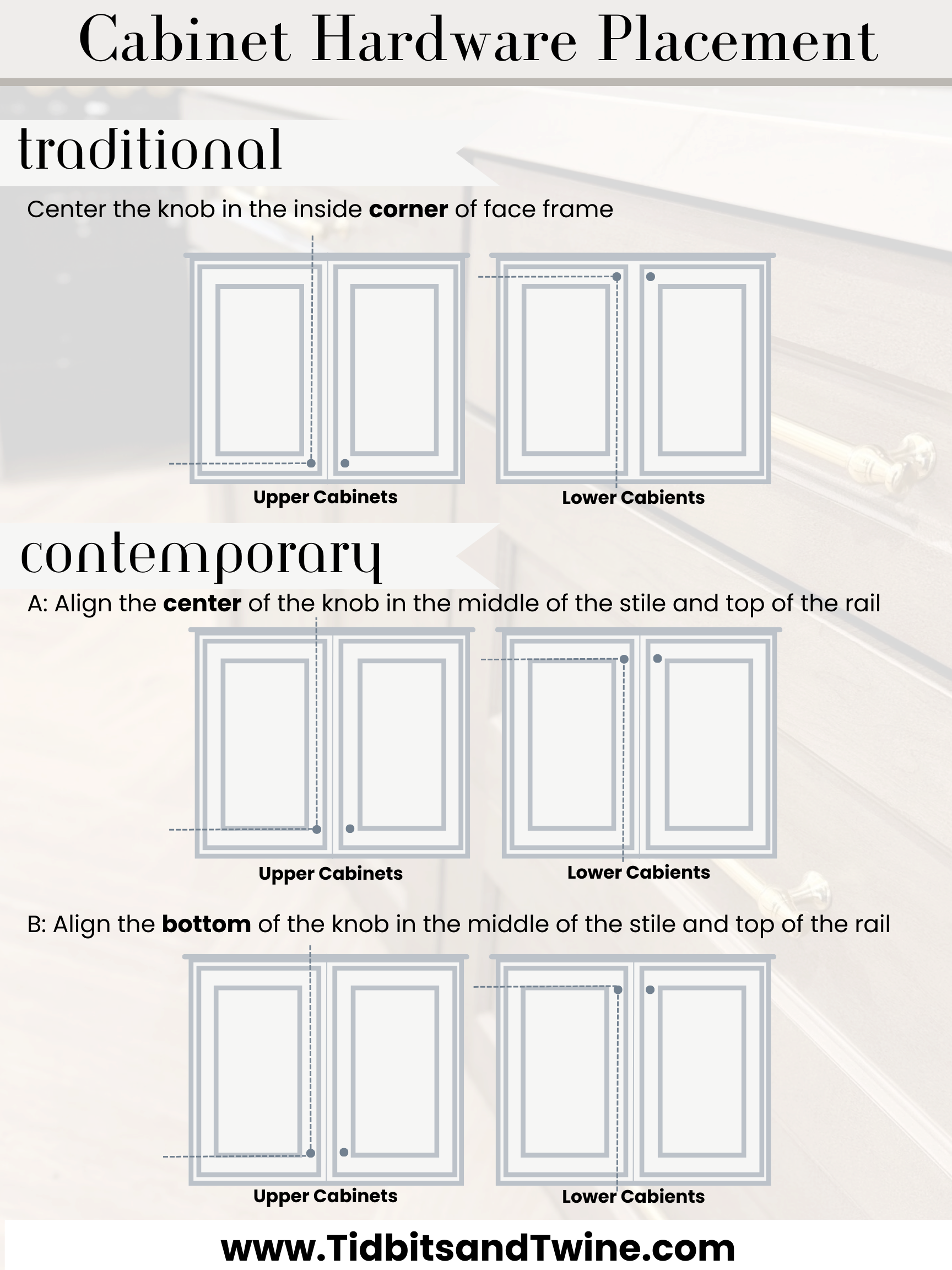
Door Pulls on Cabinets
If you choose to install pulls on your doors instead of knobs, you can use the same guideline shown above. All you need to do is use the hole for one side of your pull, and then drill a second hole to for the width pull.
Drawer Pull Hardware Placement

Typically, standard drawer pulls are centered both vertically and horizontally on the drawer front. The size of the pull depends on the size of the drawer itself and it’s okay to use different sizes of the same pull in the same space! You can also install drawer pulls centered on the top rail, if you choose.
Pulls are generally 1/3 the size of the drawer front itself, so larger drawers get larger pulls and smaller drawers get smaller pulls. You can also use knobs on drawers. Simply follow the same rule and center the knob both horizontally and vertically. If your drawer is 24″ or greater, consider using two knobs or two small pulls instead of one large one.
For this, divide your drawer into thirds and place your knob in the center of the first and third sections. This will give you a nice, balanced look but also one that functions easily.

I broke this rule in my own kitchen and used a 10″ pull on a 33″ cabinet drawer, so just under 1/3 of the size. I did consider using two knobs and I love the vintage chest of drawer look that two knobs gives. In the end, though, I decided that was too much hardware next to my ILVE range and so opted for 10″ pulls instead.
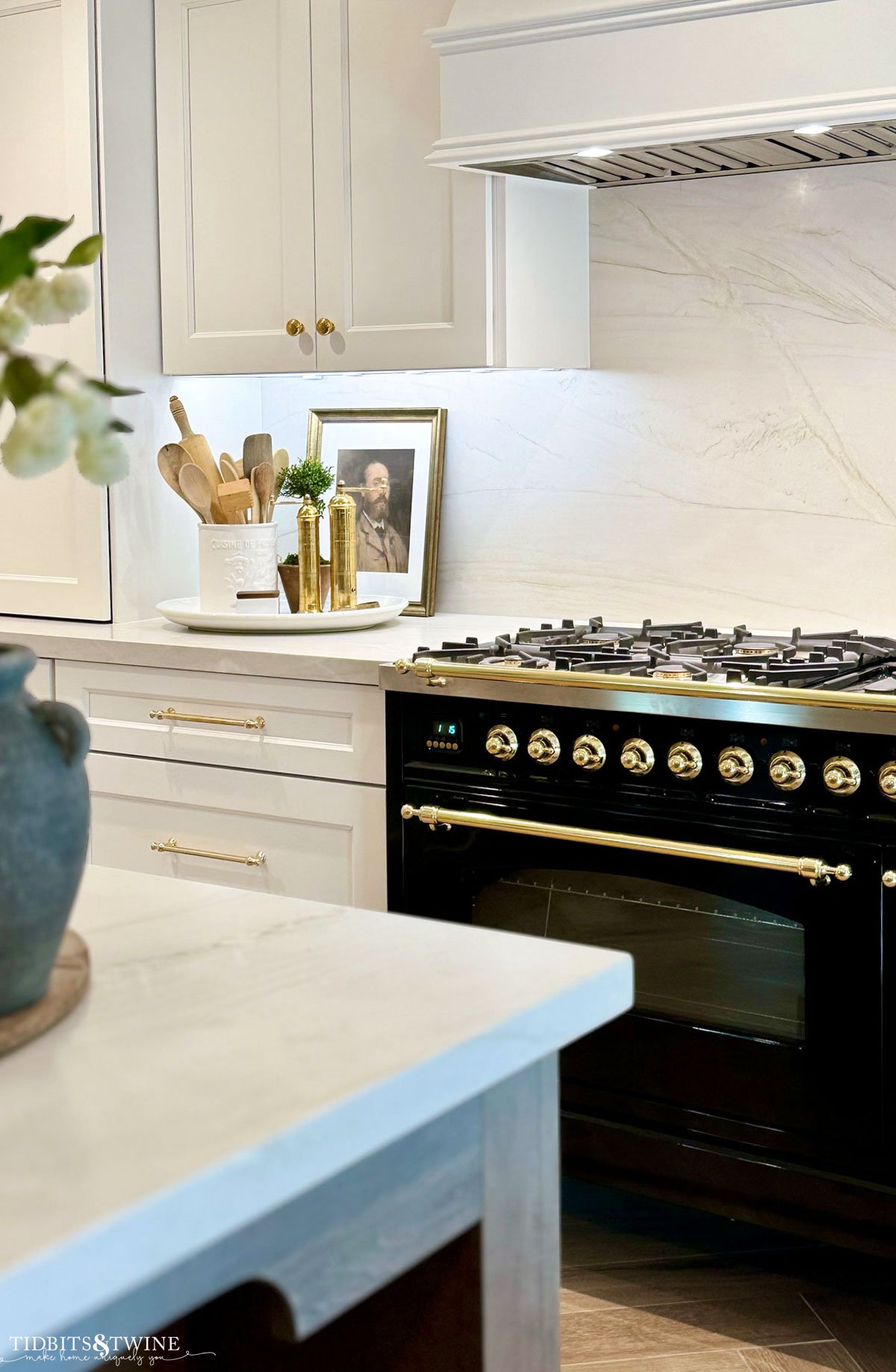
Drawer Pull Exceptions
Cup Pulls
Cup pulls should only be used on drawers, never doors. And because of the angle at which you pull on them, they are used only for lower drawers, not upper. You can still center them on your drawer fronts or, for larger drawers, double up!
Finger Pulls
Finger pulls are the exception to everything! These pulls are often used for their clean, streamlined look. They should be mounted to the top corner of lower cabinets, and lower corner of upper cabinets, on the side opposite the hinges. Putting them in the corners like this will create a streamlined look between two doors. For drawers, you can mount finger pulls centered along the top edge.
The Importance of an Installation Template
I can’t stress the importance of a hardware template enough! Making a template means that you don’t have to measure every single door and drawer, plus it reduces the chance of a mistake!
Sadly, my contractor didn’t use a template and miscalculated the hole for 10 doors/drawers! This meant that he had to reorder them for me and try again. Luckily, a different crew came out for the re-install and they made a template.

You can buy ready-made templates online that are designed to fit most doors/drawers. If not, your installer will need to make his own.
Cabinet Hardware Sources
Below are links to the various knobs and pulls used in my kitchen and primary bathroom shown in the photos above.
More Design Guides
- How High to Hang Pictures: Everything You Need to Know
- Design Rules You Should Never Break
- Coffee Table Dimensions – How to Choose the Right Size

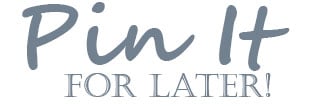
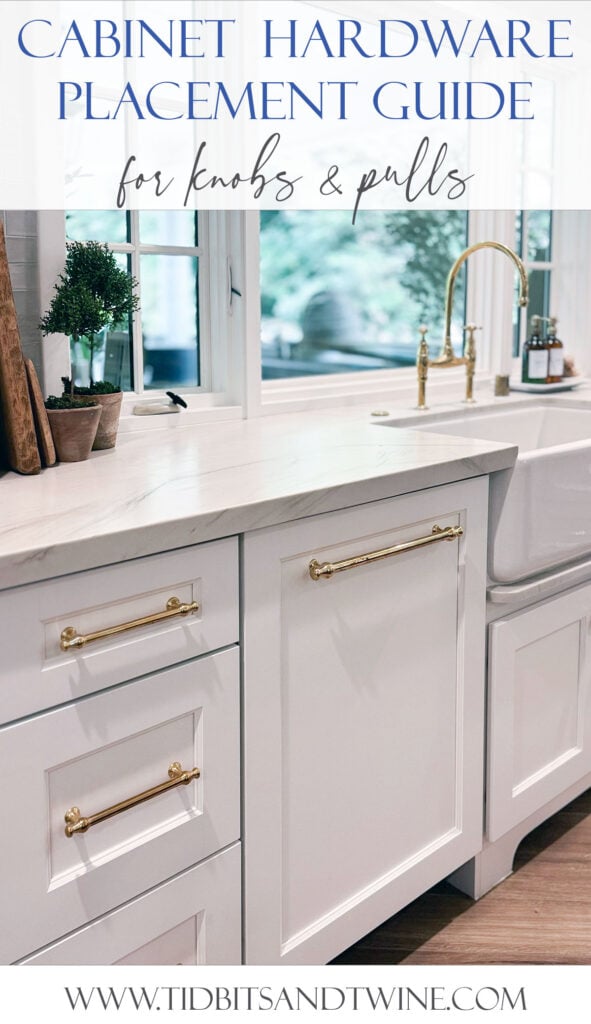
Join the Community
Let’s keep in touch! Get exclusive artwork plus the latest news delivered directly to your Inbox!


Great tips! I always struggled with where to place cabinet hardware, but your guide made it so much easier to visualize. I especially loved the diagram you included! Thank you for sharing!
I have a stack of 3 22″ drawers, 30″ free standing range, 11″ utensil pullout, 24″ panel ready dishwasher, 38″ sink (double doors), 24″ garbage disposal. With all of these using pulls except for the sink doors, should I put the pulls in horizontal alignment to the first drawer? Or should the first drawer be vertically centered and the rest of the pulls be on the top rail?
Great tips! I love how you broke down the measurements for hardware placement. It made it so much easier to visualize what would work in my kitchen. Thanks for sharing!
This guide on cabinet hardware placement is a goldmine for anyone tackling a renovation project! Clear, informative, and practical, it simplifies the often-overwhelming task of choosing knobs and pulls. The detailed advice ensures both functionality and aesthetics are covered. If you’re sprucing up your kitchen or shopping for Bedside Cabinets Sale, this guide offers great insight into achieving a polished, cohesive look throughout your home.
Loved this guide! I was struggling to figure out where to place my cabinet hardware, but this breakdown was super helpful. Can’t wait to apply it to my own kitchen makeover project!